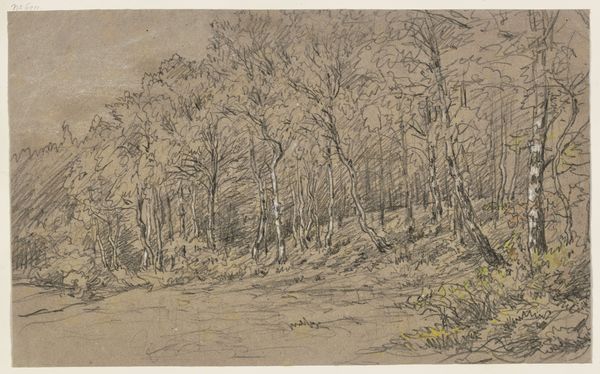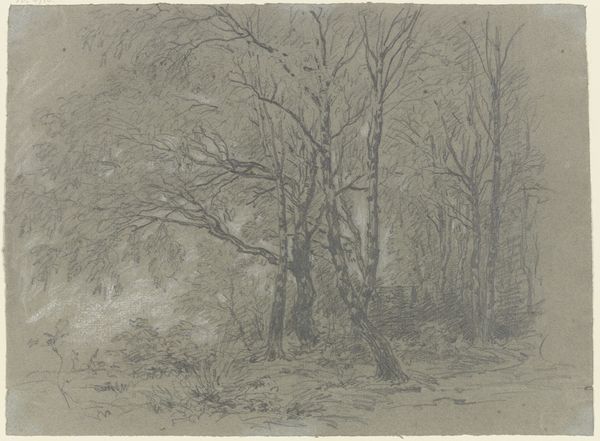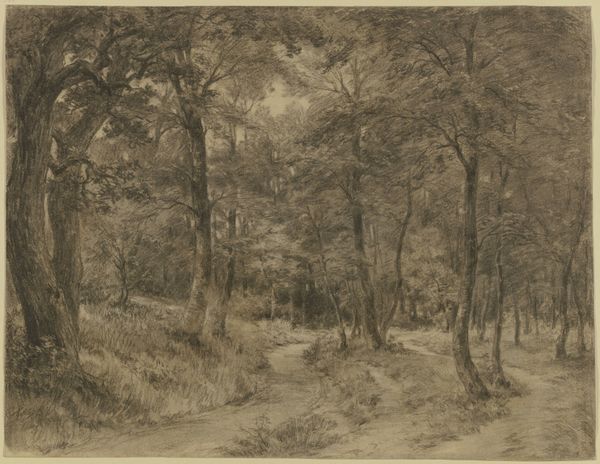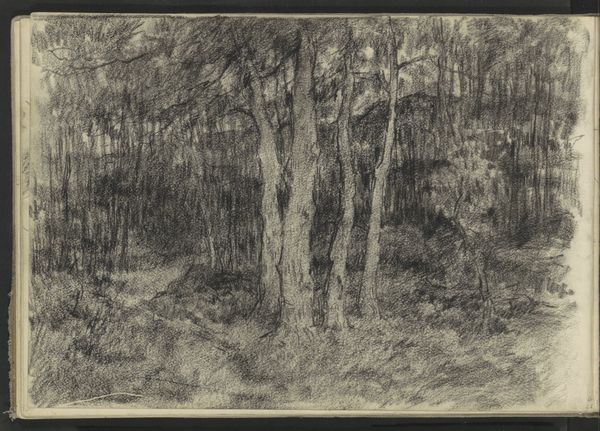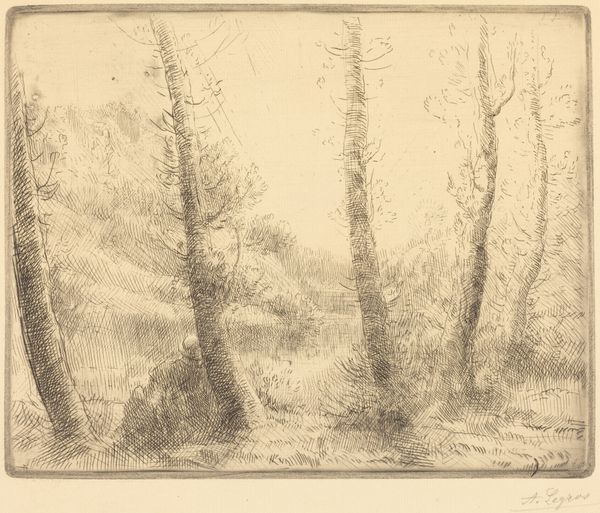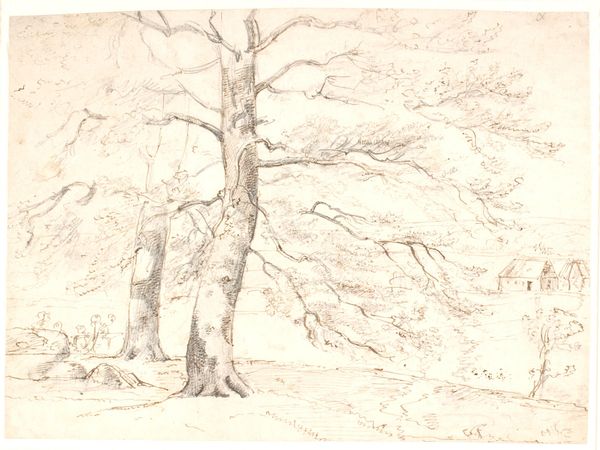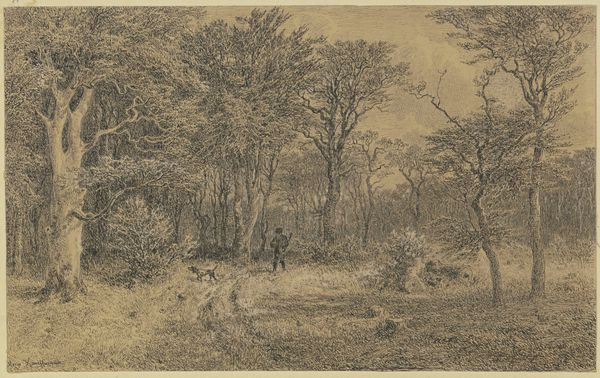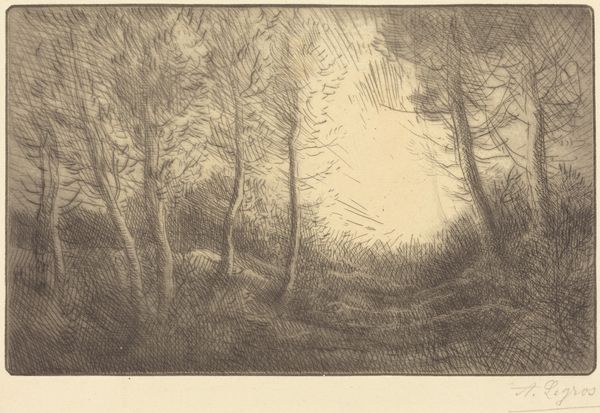
drawing, pencil, chalk, charcoal, pastel
#
drawing
#
16_19th-century
#
pencil sketch
#
landscape
#
pencil
#
chalk
#
charcoal
#
pastel
Copyright: Public Domain
Editor: Here we have Jakob Maurer's "Birch Trees at the Edge of the Forest," a drawing residing here at the Städel Museum. It looks to be done with graphite, perhaps with some charcoal or pastel too. There is a really wonderful understated feel to this landscape. What stands out to you when you look at it? Curator: I'm struck by Maurer's commitment to process, most specifically in how these diverse drawing materials are handled. Note the different ways line and tone are created—from the delicate hatching suggesting depth, to the broader strokes building mass and shadow. The very act of layering these materials reveals a negotiation, almost a dialogue between the artist, the paper, and the observed subject. What relationship did the artist have with the landscape and what material resources did they use? These are important aspects to understand, more so than pure aesthetics. Editor: That’s an interesting take. I was looking more at the overall image and the technique, noticing how effectively the different pencil strokes mimic the rough texture of bark and the lightness of the leaves, the almost whimsical nature of the scenery. But, your analysis makes me consider the accessibility of materials: Was Maurer trying to democratize art-making by choosing commonplace and cost effective media? Curator: Precisely! And we should also consider the social context of landscape art at the time, and Maurer's access to land, tools and even leisure to make these drawings. These weren't mere copies of nature; they were active interpretations, shaped by the means available and by economic factors. Editor: So it's about digging beneath the surface, appreciating not just what's depicted, but the social and economic conditions that made the work possible? Curator: Absolutely. This shift in perception can reveal deeper insights into art history, blurring the boundaries between the artistic endeavor and everyday life, or between ‘high art’ and mere ‘sketching.’ Editor: I'll definitely look at artworks through this lens going forward. It completely changes how I understand not only this drawing, but the role of the artist as well. Curator: It’s a richer way to examine materiality of the means of production of artworks!
Comments
No comments
Be the first to comment and join the conversation on the ultimate creative platform.
